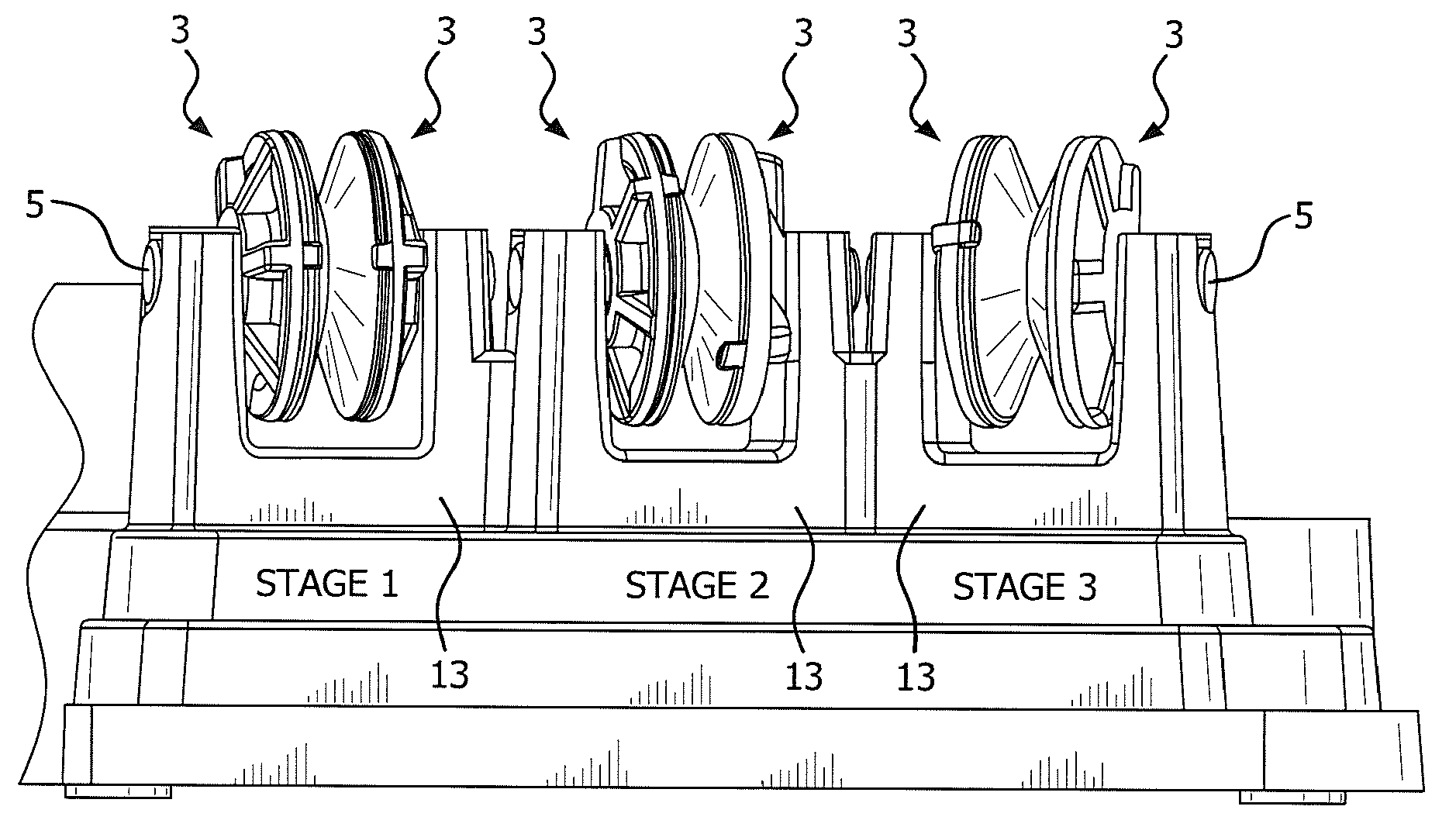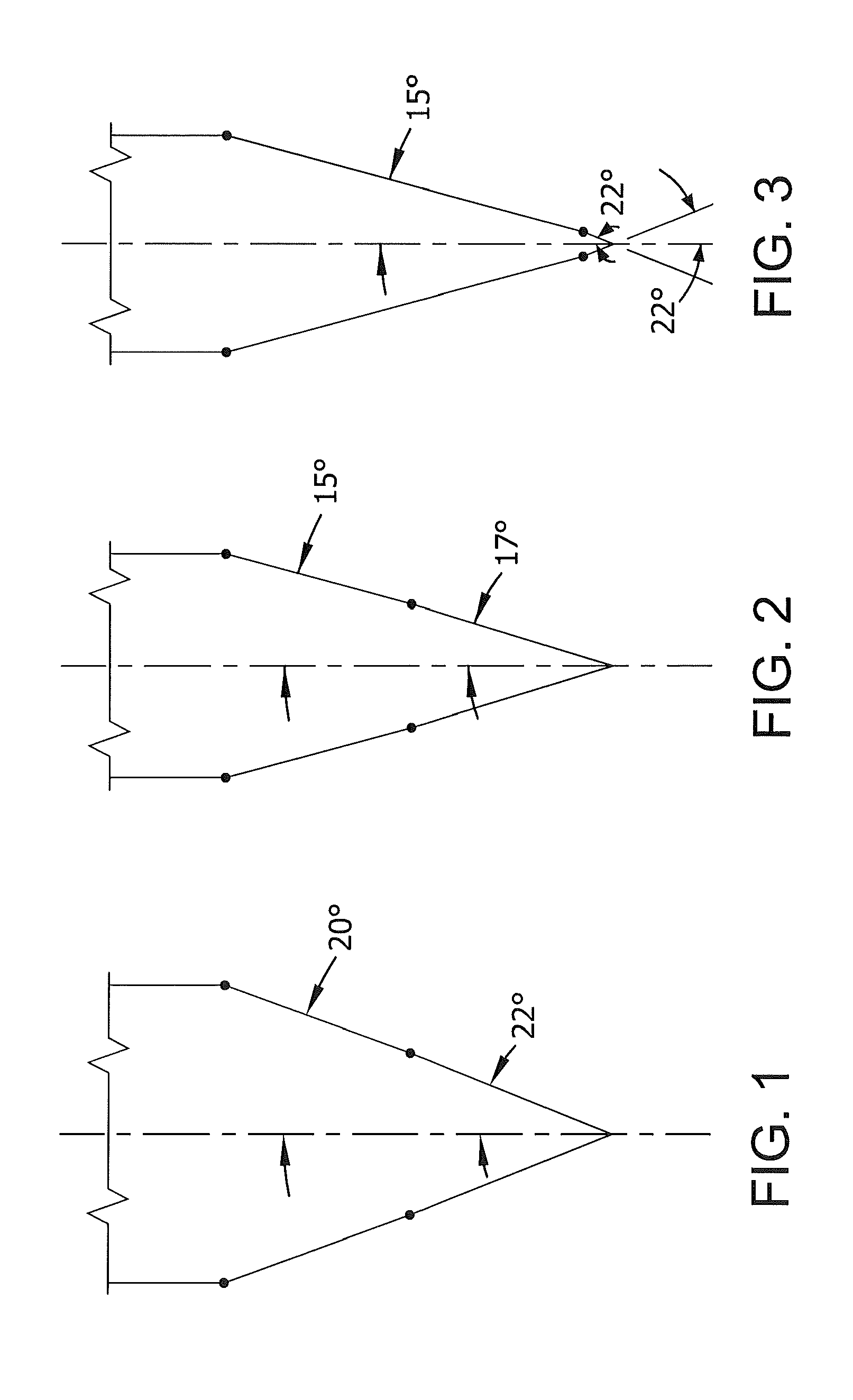Knife sharpener for asian and european/american knives
a technology for asian and european/american knives and sharpeners, which is applied in the field of sharpeners for knives, can solve the problems of asian knives with smaller edge angles that are not readily available or popular, and the sharpener of asian knives is laborious, and achieves the effects of not folding over so quickly, less effort, and longer holding
- Summary
- Abstract
- Description
- Claims
- Application Information
AI Technical Summary
Benefits of technology
Problems solved by technology
Method used
Image
Examples
Embodiment Construction
[0024]This invention relates to a high quality versatile and unique manual sharpener with only 3 sharpening stages that can sharpen with high precision in two sharpening steps either 15 degrees Asian knives or the conventional 20° European / American style. Prior to this development the creation of an edge on a conventional 20° edged knife in the most advanced sharpeners has been obtained by a two stage process where the first stage has an aggressive sharpening abrasive to grind a full primary 20° facet along each side of the edge. State of the art sharpeners then polish the entire or majority of the primary facet length with a finer abrasive set at the same angle or at a slightly larger angle, about 22° (FIG. 1). Similarly to sharpen an Asian 15° edge (30° total) the first stage would be set at 15° and the second stage would be in the range of 15-17 degrees, the two stages being just about 2 degrees difference in order to refine virtually the entire facet surfaces and to create a sec...
PUM
| Property | Measurement | Unit |
|---|---|---|
| angle | aaaaa | aaaaa |
| angle | aaaaa | aaaaa |
| angle | aaaaa | aaaaa |
Abstract
Description
Claims
Application Information
 Login to View More
Login to View More - R&D
- Intellectual Property
- Life Sciences
- Materials
- Tech Scout
- Unparalleled Data Quality
- Higher Quality Content
- 60% Fewer Hallucinations
Browse by: Latest US Patents, China's latest patents, Technical Efficacy Thesaurus, Application Domain, Technology Topic, Popular Technical Reports.
© 2025 PatSnap. All rights reserved.Legal|Privacy policy|Modern Slavery Act Transparency Statement|Sitemap|About US| Contact US: help@patsnap.com



